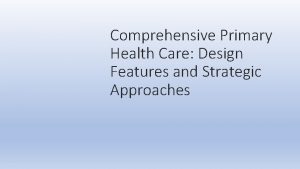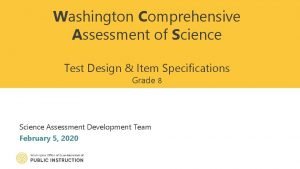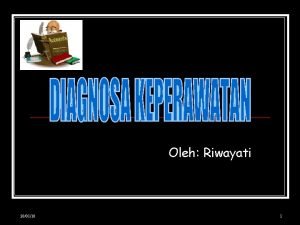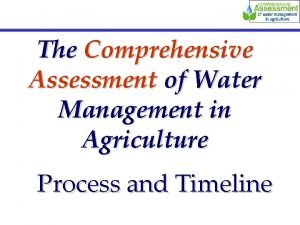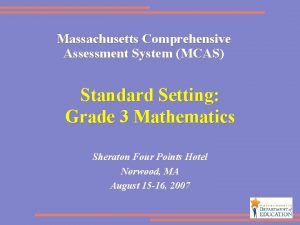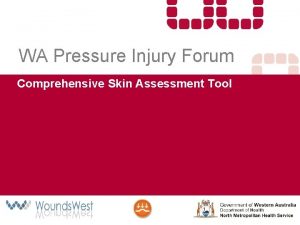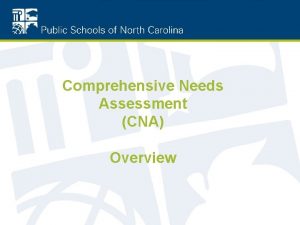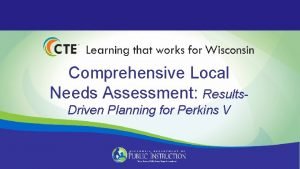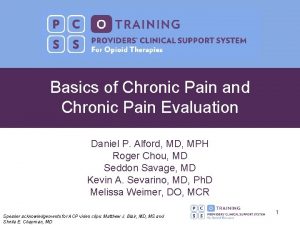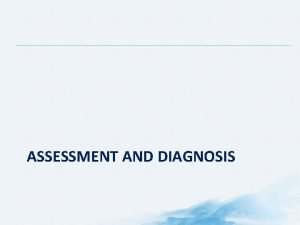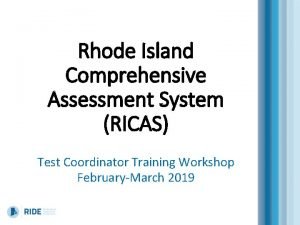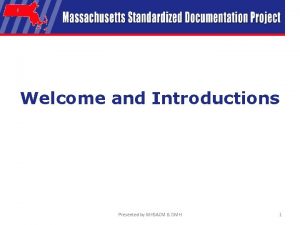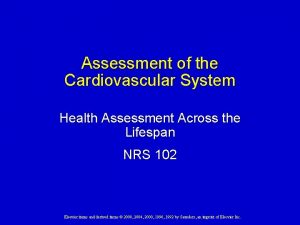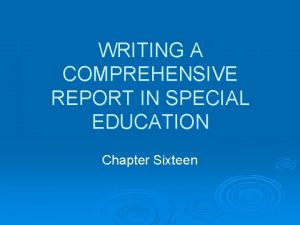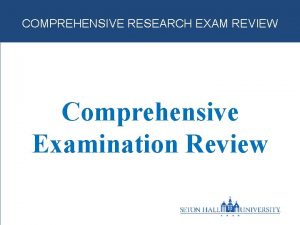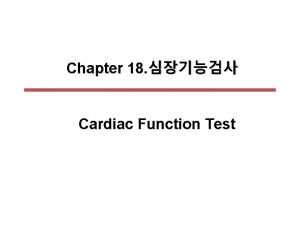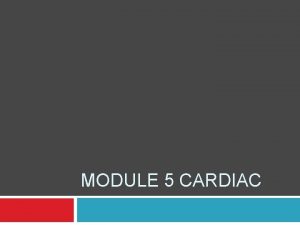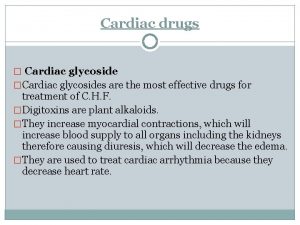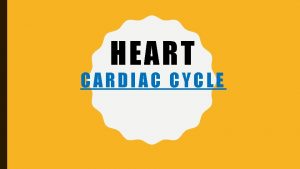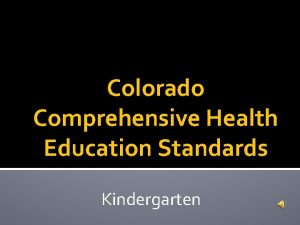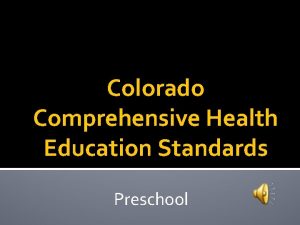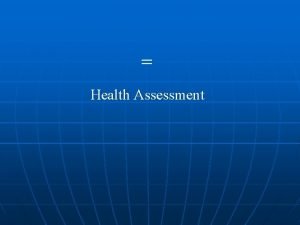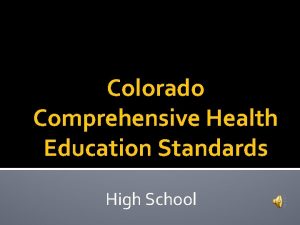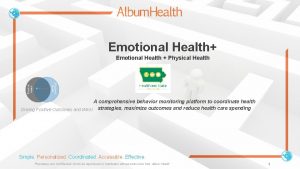Cardiac Assessment Comprehensive Cardiac Assessment l Health History














- Slides: 14

Cardiac Assessment

Comprehensive Cardiac Assessment l Health History l Inspection l Normal/abnormal l Palpation-4 landmark areas Normal/abnormal l Technique l l Auscultation

Auscultation l Normal l Rate l Rhythm Regular l Irregular l l Strength (intensity) l Extra Sounds

Chest Landmarks

Anatomical Landmarks Heart Sounds Aortic Area: 2 nd intercostal space (ICS), right sternal border l Pulmonic Area: 2 nd ICS, left sternal border l Tricuspid Area: 5 th ICS, left sternal border l Mitral or Apical Area: 5 th ICS, medial to the midclavicular line l l AP TO MAN

S 1: Systole l l l First heart sound Closure of the AV valves – loudest at the tricuspid and mitral landmarks “lub” Dull, low pitched Longer than S 2 Carotid pulse

S 2: Diastole l l l “dub” High pitch Shorter Semilunar valves close –loudest at the pulmonic or aortic valves landmarks S 1 and S 2 within 1 second or less

S 3 l l l l Beginning of diastole Position on L side Mitral area Bell Low pitched “Kentucky” Too rapid of filling of the venticules HF

S 4 l Before S 1 l Position on L side l Mitral area l Bell l Low pitched l “Tennessee” l Abnormal flow l Elderly, MI, HTN

Murmur l l l Turbulence of blood flow Increased blood flow Incomplete valve closure l Stenosis l Regurgitation Blood flow through: l a dilated chamber l abnormal opening between chambers Anywhere in the cycle Pathology l Benign l Abnormal

Classification of Murmurs l Location l Intensity l Pitch l Quality l Timing l Position (I-VI)

Other Abnormal Heart Sounds l Pericardial Friction Rub l a scratching high pitched sound caused by friction between the pericardial and epicardial surfaces (pericarditis)

Cardiac Assessment Auscultation l l l Quiet environment Consistent /Systematic Method– with bell and diaphragm Listen for 1 full minute Listen with stethoscope and feel for radial Louder sounding valves at different locations Positioning l Sitting up and leaning forward l Left lateral recumbent l Supine

Auscultation Tips l Diaphragm l l Bell l l high-pitched sounds such as S 1, S 2, murmurs, pericardial friction rubs. low-pitched sounds such as S 3, S 4, and murmurs. S 3 and S 4 best position is the Left lateral using the bell
 Comprehensive primary health care definition
Comprehensive primary health care definition Wa.portal.cambiumast.com
Wa.portal.cambiumast.com Penilaian klinis
Penilaian klinis Aca form air force
Aca form air force Comprehensive assessment of water management in agriculture
Comprehensive assessment of water management in agriculture Body: massachusetts comprehensive assessment system
Body: massachusetts comprehensive assessment system Skin assessment tool
Skin assessment tool Comprehensive needs assessment
Comprehensive needs assessment Comprehensive local needs assessment
Comprehensive local needs assessment Comprehensive pain assessment
Comprehensive pain assessment Pqrst pain scale
Pqrst pain scale Ricas pearson login
Ricas pearson login Msdp comprehensive assessment form
Msdp comprehensive assessment form Cardiac assessment documentation example
Cardiac assessment documentation example Writing a comprehensive report in special education
Writing a comprehensive report in special education
